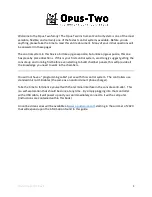
15
E
n
g
li
s
h
5.6 Replacing the pressure plate support pads
The pressure plate is held in position by a series of self adhesive support pads
between the plate and the underside of the lid (Figure 6).
These pads ensure that the correct pressure is applied to the sample paper
surface by the pressure plate. If these pads lose their adhesive properties they
can be replaced as follows:-
1. Gently lever the pressure plate away from the lid.
2. Remove the remains of the support pads.
3. Remove any remaining adhesive with methylated spirits.
4. Remove the protective paper from one side of four replacement pads.
5. Place them on the underside of the lid in the same places as the old ones
were removed from.
6. Remove the protective paper from the other side of the pads carefully
position the pressure plate in the centre of the lid recess.
7. Apply firm pressure to the plate to achieve adhesion.
8. Thoroughly clean the electrode and pressure plate surfaces - see
“Removing and cleaning or replacing the electrodes” on page 14.
5.7 Replacing the battery
It is essential that alkaline batteries
d
are used in the Elcometer 130 SCM400.
The battery compartment is under the name plate on the underside of the
instrument.
Replace the battery by removing the six screws and fit the new battery, ensuring
correct polarity.
5.8 Storage
This meter incorporates a Liquid Crystal Display. If the display is
heated above 50°C (120°F) it may be damaged. This c an happen if the
meter is left in a car parked in strong sunlight.
d.
Alkaline batteries must be disposed of carefully to avoid environmental contamination.
Please consult your local environmental authority for information on disposal in your
region. Do not dispose of any batteries in fire.






































